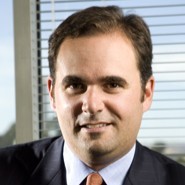TECH TUESDAY is a weekly content series covering all aspects of capital markets technology. TECH TUESDAY is produced in collaboration with Nasdaq.
Today, trading shares in private companies is probably where public markets were 50 to 75 years ago in terms of the amount of manual processes, speed, and opacity.
Tom Callahan, CEO of Nasdaq Private Market (NPM), went as far as saying the process of buying shares in a private company is more akin to buying a co-op apartment in New York City than it is to buying shares in a publicly traded company.

That archaism is poised to change as data and technology providers such as NPM work to enable more investor participation and access in the pre-IPO market that often sees the fastest growth stories.
“We can streamline and augment” trading in private markets, Callahan said during an interview with Larry Tabb, Head of Market Structure Research at Bloomberg Intelligence, as part of the Security Traders Association’s (STA) annual market structure conference on Oct. 13. “We’ll never take it to where the public markets are. But if we can decrease friction by half or three quarters this can be an [even more] investable asset class.”
“It feels like this is an asset class ready to grow up,” Brett Mock, Senior Vice President and Head of Global Capital Markets at NPM, said in the same interview. “It is the last unpaved road of equity market infrastructure.”

NPM was incubated within Nasdaq starting in 2013, and it spun out as an independent company last year. However, Nasdaq remains a large shareholder.
The need for better trading in private markets came into focus with the 2012 Jumpstart Our Business Startups (JOBS) Act, which encouraged companies to stay private longer. There has since been a boom in private companies. The universe of ‘unicorns’, private companies valued at more than $1 billion, expanded from 15 a decade ago to more than 1,200 today, Callahan said.
Employees of private companies need liquidity, as do outside investors. “Traditionally there hasn’t been a platform that enabled those two constituents to meet in a way that’s transparent, regulated, standardized, and trusted,” Callahan said. “Our mission is to bring liquidity to private markets.”
NPM has improved the data, information flow, and technology in private markets. In addition to Nasdaq, NPM has brought in banks, including SVB, Goldman Sachs, Morgan Stanley, Citi, and Allen & Co as investors and strategic partners. “The aim is to transform the private markets from a fragmented and siloed environment with price discovery staying within certain brokers to a system with wide dissemination of information and access,” Mock said.
“We want to partner with the largest banks in the world – leverage their distribution and brands and the ability to raise capital,” Callahan said. “We’re a technology provider, we’re a marketplace, we’re a platform. We’re trying to decrease friction, not monetize friction, through technology.”
NPM has facilitated almost $50 billion in private market transactions since inception, Callahan said. Despite 2022 market conditions, the longer-term outlook remains strong.
“This is a marketplace here to stay, and the industry needs a market center to drive price discover and liquidity,” Mock said.
“It’s a story of an asset class that is maturing,” noted Callahan. “The largest banks in the world are making enormous investments in their private market infrastructure. And, so we think that is a big part of the story and why we have aligned ourselves with the banks, because they really are the future of the private markets.”








